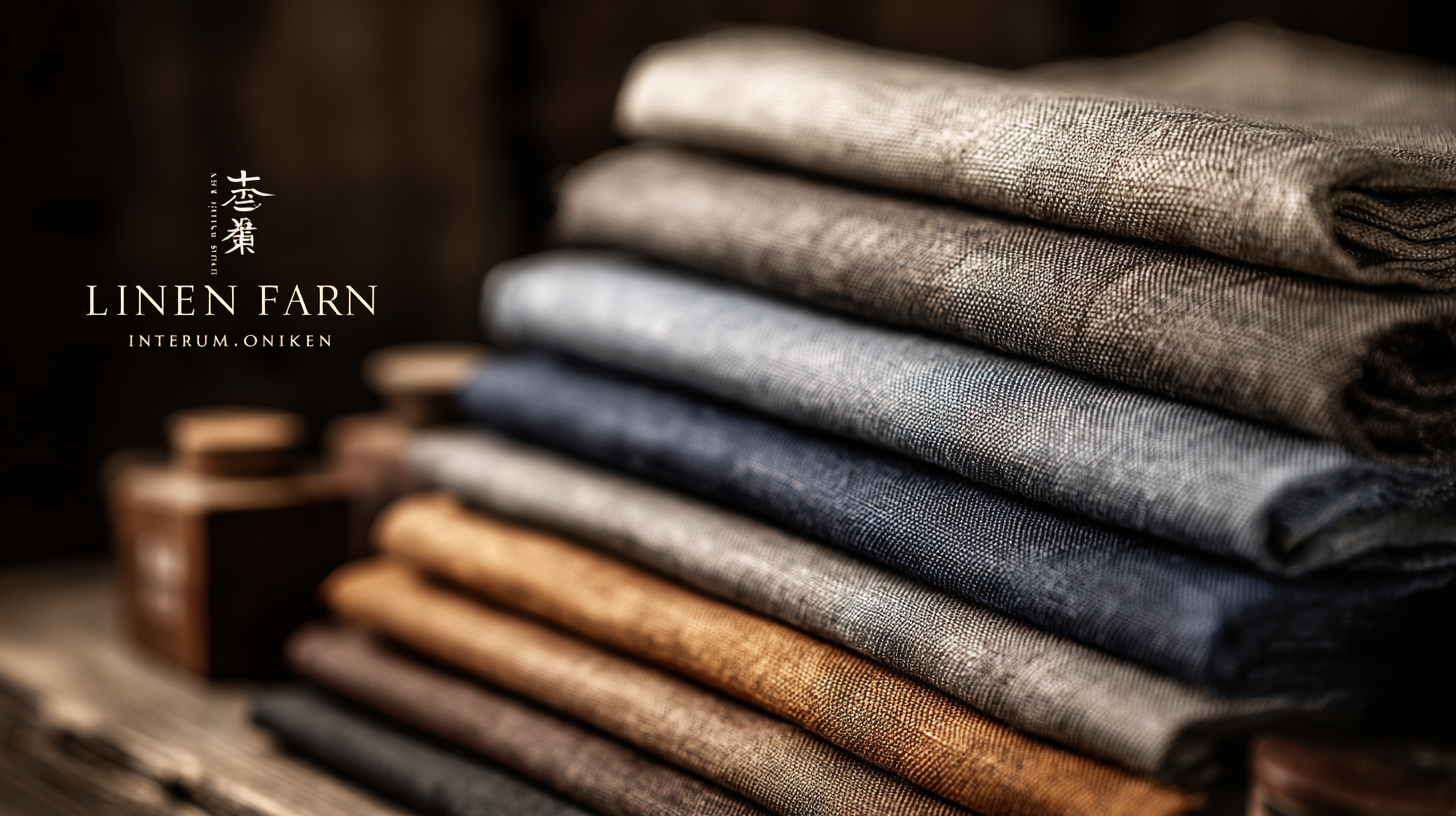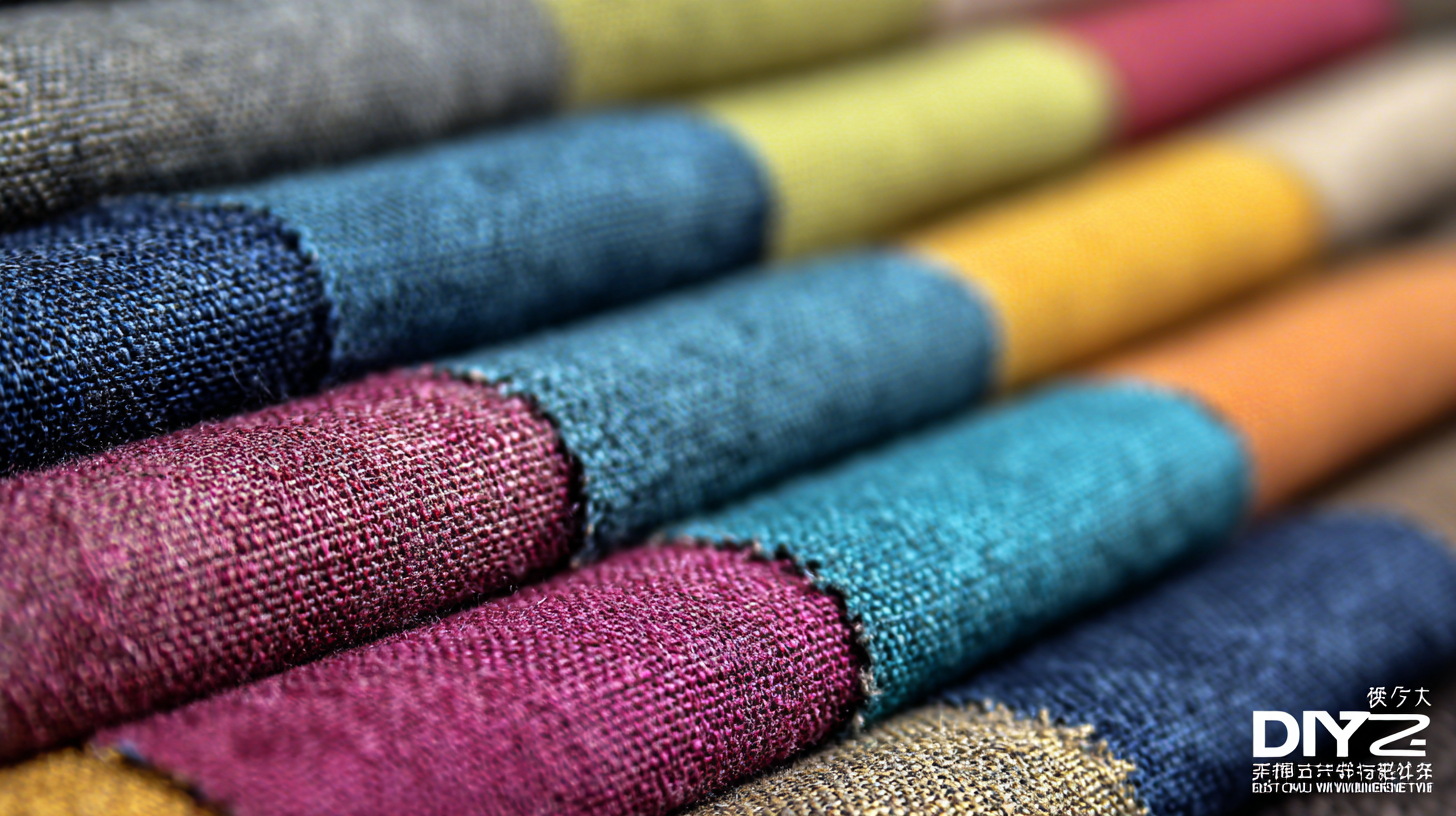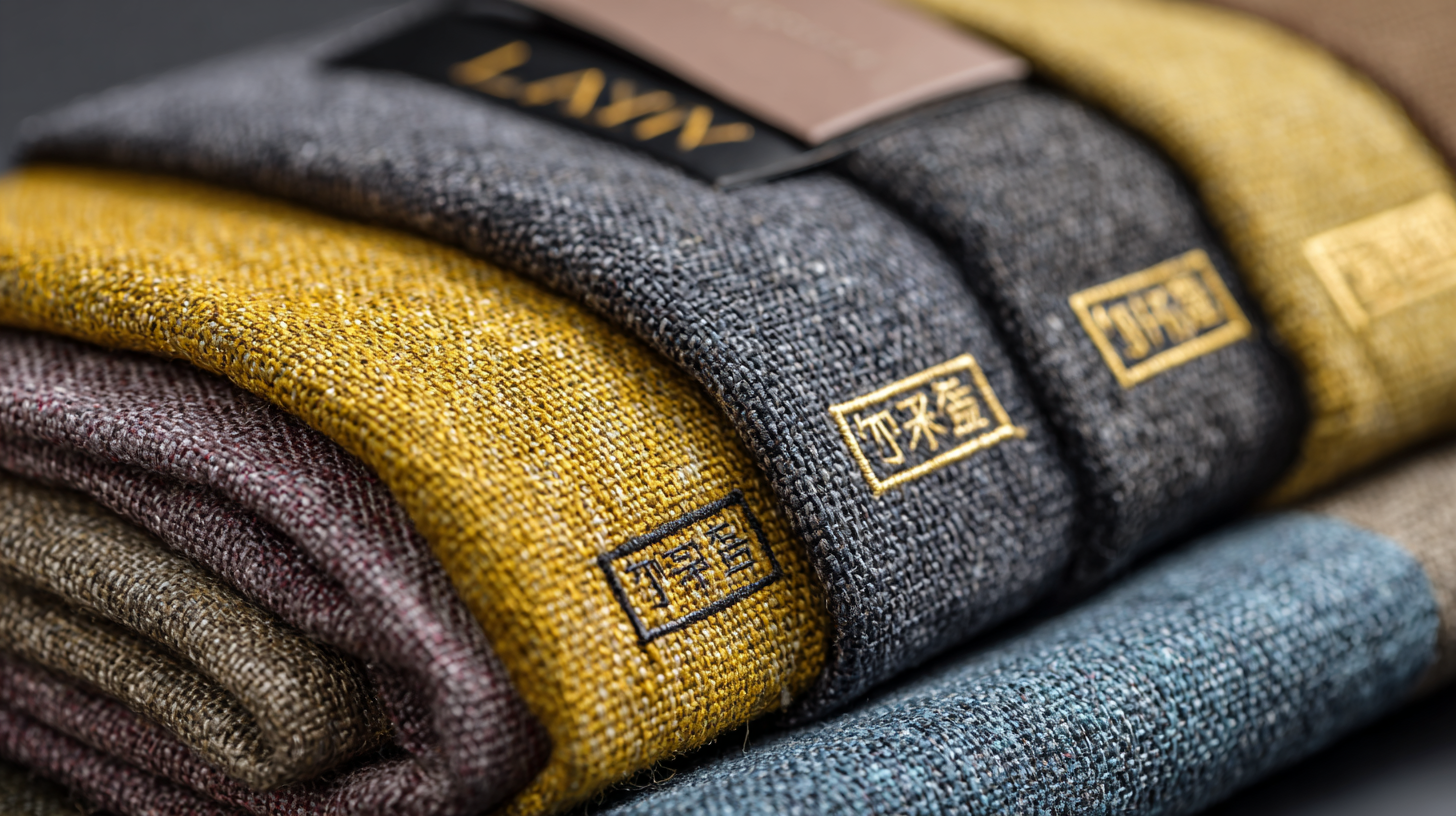The global demand for high-quality textiles has seen a significant surge in recent years, leading to an increased interest in products such as Imitation Linen Fabric. According to a report by Research and Markets, the global market for linen textiles is projected to reach $3.5 billion by 2026, driven by a growing preference for sustainable and durable fabrics. As consumers become more environmentally conscious, the allure of Imitation Linen Fabric, which combines the aesthetic appeal of natural linen with enhanced performance characteristics, has become undeniable.

This fabric not only emulates the luxurious feel and appearance of traditional linen but also offers greater affordability and easier maintenance, making it ideal for a wide range of applications in both fashion and home decor. In this guide, we will explore the premium quality options available from China and delve into the benefits and trends shaping the future of Imitation Linen Fabric in global markets.
The premium quality of imitation linen fabric from China is gaining significant traction in global markets. As consumers become more eco-conscious and budget-savvy, this innovative fabric offers a sustainable alternative to traditional linen without compromising on style or comfort. The rise of imitation linen reflects a shift in consumer preferences, driven by a desire for versatile materials that can mimic luxury textiles while remaining accessible.
China's fabric market has rapidly evolved to meet the demand for high-quality alternatives. With advancements in textile technology, manufacturers are producing imitation linen that boasts durability and an elegant drape, appealing to fashion brands worldwide. This trend is particularly significant against the backdrop of changing international trade dynamics, where new tariffs on imports are reshaping the landscape for fashion retailers. As brands adapt to these changes, the incorporation of premium imitation linen into their offerings could provide a compelling solution that balances quality with affordability, ensuring a competitive edge in the fast-paced world of global fashion.
The landscape of imitation linen fabric is undergoing a significant transformation, driven by technological innovations that enhance quality and sustainability. Recent reports from the Global Textile Industry Association indicate that the market for synthetic textiles, including imitation linen, is projected to grow at a CAGR of 6.5% from 2023 to 2028. This growth is largely attributed to advancements in fiber technologies that improve fabric durability and breathability, appealing to environmentally-conscious consumers who demand both luxury and performance.

In China, manufacturers are leveraging cutting-edge technologies, such as digital printing and automated weaving, to produce imitation linen that mimics the aesthetics of natural linen while offering superior functionality. According to a study by the Fabric Innovations Forum, approximately 75% of designers now prioritize the use of eco-friendly materials in their collections, further pushing the industry towards sustainable practices. These innovations not only enhance the fabric's visual and tactile qualities but also reduce waste and energy consumption, making the future of imitation linen fabric more promising for global markets.
When comparing imitation linen and traditional linen fabric, it's vital to understand their distinct characteristics and use cases. Traditional linen, made from the flax plant, exudes a natural charm and durability that many consumers appreciate. It is breathable, moisture-wicking, and often regarded as the epitome of luxury in textiles. However, its high cost and tendency to wrinkle can pose challenges for some buyers.
On the other hand, imitation linen provides a more affordable alternative without sacrificing the aesthetic appeal of linen textures. Often made from polyester or blended fibers, imitation linen is wrinkle-resistant, easy to care for, and retains vibrant colors well. This makes it an excellent choice for fashion brands and home decor enthusiasts looking for stylish options on a budget.
**Tip 1:** When choosing between the two, consider the end use of the fabric. For formal events, traditional linen may be the better choice, while for everyday wear, imitation linen can provide style and practicality.
**Tip 2:** Always check the fabric composition when shopping for imitation linen. Blends with cotton or rayon can enhance comfort and breathability, making them ideal for various applications.
In the ever-evolving textile industry, the demand for sustainable fabrics has never been greater. The rise of eco-friendly practices in fabric production is transforming the way we approach textile manufacturing, particularly in countries like China, which is renowned for its output of high-quality imitation linen fabric. By prioritizing sustainable alternatives, manufacturers are not only reducing their ecological footprint but also setting a benchmark for quality and innovation in the global market.
One of the key components of sustainable fabric production lies in the materials utilized. Eco-conscious companies are increasingly turning to organic fibers, recycled materials, and low-impact dyes that minimize harm to the environment. Moreover, advancements in technology are enabling manufacturers to produce imitation linen that mimics the luxe feel of natural linen while using less water and energy in the process. This commitment to sustainability not only appeals to environmentally aware consumers but also contributes to a more responsible and ethical fashion industry.
As the world becomes more aware of environmental issues, the shift towards sustainable fabric production is paving the way for a more conscious consumer culture. The high-quality imitation linen fabric produced in China exemplifies how sustainability and quality can go hand in hand, providing global markets with chic and eco-friendly options that meet the demands of today and protect the planet for future generations.
| Fabric Type | Composition | Weight (gsm) | Width (cm) | Sustainability Rating | Certifications |
|---|---|---|---|---|---|
| Imitation Linen A | 100% Polyester | 150 | 150 | A+ | OEKO-TEX, GRS |
| Imitation Linen B | Recycled Polyester | 200 | 145 | A++ | GOTS, OEKO-TEX |
| Imitation Linen C | Cotton Blend | 180 | 160 | A | OEKO-TEX |
| Imitation Linen D | Viscose | 160 | 155 | B+ | FSC, GRS |
As we approach 2025, the global market for fabrics is witnessing a notable shift towards high-quality imitation linen. This trend is driven by increasing consumer awareness of sustainability and the desire for eco-friendly alternatives to traditional materials. Imitation linen, often made from recycled fibers, offers a luxurious look and feel while being more affordable, making it an attractive option for both manufacturers and consumers alike. The versatility of this fabric extends to various applications, from fashion to home decor, enabling designers to innovate while meeting the demand for quality.

Key players in the textile industry are recognizing the potential of sourcing premium quality imitation linen from China, which has become a hub for advanced fabric technology and production. With the integration of cutting-edge manufacturing processes, Chinese suppliers are able to produce imitation linen that rivals natural linen in texture and aesthetic appeal. This not only meets the growing global demand for sustainable fabric options but also positions China as a leader in the textile market. As we move forward, the emphasis on quality will continue to shape the purchasing decisions of businesses and consumers, creating opportunities for the growth of this market segment.
